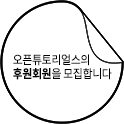(1) There is one respect in which the analogy breaks down.
There is one respect
in which the analogy breaks down.
어휘
* There is one respect in which they differed. 그들이 다른면이 한가지가 있다.
해석
비유가 잘못된 것에는 한가지 사항이 있다.
(이 비유가 통하지 않는 점이 있다.)
(2) The ball is a simple unit.
해석
공은 단순한 구성단위이다.
(3) It is either completely caught or not.
해석
공은 완전히 잡히거나 그렇지 않거나 이다.
(4) A piece of writing, however, is a complex object.
해석
그러나 쓰기의 조각은 복잡한 것이다.
(5) It can be received more or less completely, all the way from very little of what the writer intended to the whole of it.
It can be received more or less completely,
all the way from very little of what the writer intended
to the whole of it (what the writer intended).
어휘
* all the way from A to B : A에서 B까지 쭉
해석
작가의 의도가 거의 없는것에서 전부인것까지 거의 절대적으로 받아들여질수 있다.
---> ???????
(6) The amount the reader “catches” will usually depend on the amount of activity he puts into the process, as well as upon the skill with which he executes the different mental acts involved.
The amount the reader “catches”
will usually depend on the amount of activity
he puts into the process,
as well as upon the skill
with which he executes the different mental acts involved.
해석
독자의 이해의 많은 부분은
대개 활동의 많은 부분에 의지할것이다.
(어떤 활동이냐면) 그는 과정에 들어간다.
기술뿐만 아니라
그는 다른 정신적 행동에 몰두된 상태로 만들어내는 것으로
--> 뭔말이냐... $@!$#@$#@!$#@
독자의 이해의 많은 부분은 대개 활동의 많은 부분에 의지할것이다.
(어떤 활동이냐면)
독자가 다른 정신적 행동에 참여된 것을 실행하는 것으로
기술뿐만 아니라 과정에 들어가는 활동
이호성님 해석
보통 독자가 얻는 양은 읽기 과정에 들어가는 활동의 양뿐만 아니라 각기 다른 정신적 행동과 관련된 기술에 의존한다.



